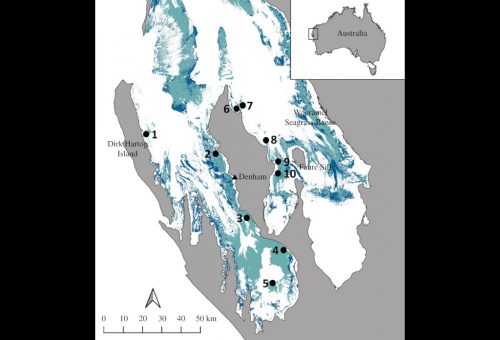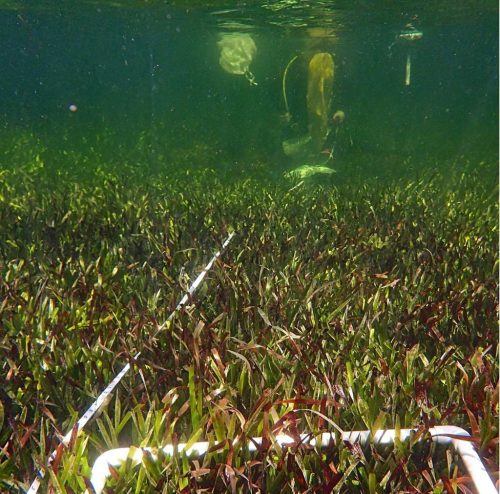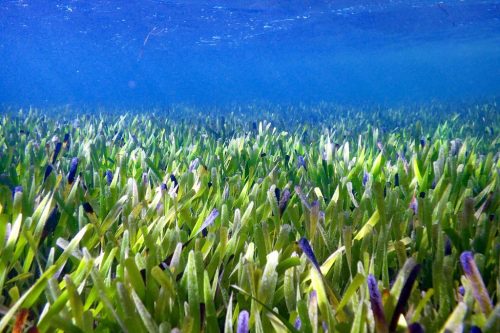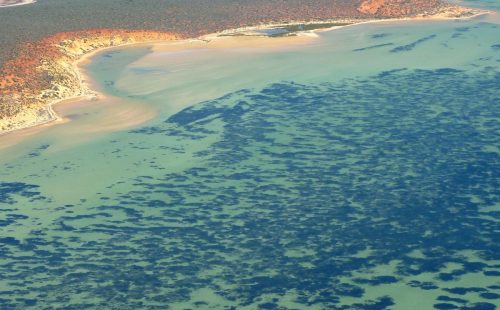Shark Bay, Western Australia —(Map)
Scientists have discovered what they believe is the world’s largest plant, an underwater field of sea grass that stretches for 112 miles (180 kilometers) off the west coast of Australia. The sea grass plant is believed to be around 4,500 years old.
Sea grasses are flowering plants that grow in shallow waters near coasts. They grow together in thick fields, known as meadows. Sea grass meadows help clean the ocean’s water. They also provide food and shelter for many sea creatures. The climate crisis and human pollution are threatening sea grass meadows in many places around the world.

(Source: Edgeloe, et al., The Royal Society Publishing.)
But the huge sea grass meadow in Shark Bay, off the coast of Western Australia, seems to be doing very well. It’s a kind of sea grass called Posidonia australis, and it has spread widely all through Shark Bay.
Scientists from the University of Western Australia and Flinders University wanted to study the sea grass, so they took samples from 10 different parts of this huge meadow.
Many plants create new plants by growing flowers and spreading seeds. The DNA of the plants that grow from these seeds is slightly different from the DNA of the plants that the seeds came from. By comparing the DNA from their samples, the scientists hoped to get an idea of how many different sea grass plants there were in the meadow.

(Source: Rachel Austin, The Conversation.)
What they learned shocked them – all of the grass samples had almost exactly the same DNA. That meant that they were all just one plant. One big sea grass plant spreading out over 77 square miles (200 square kilometers). This makes it the largest known plant in the world, by far.
So how has the Shark Bay sea grass grown so large? Instead of spreading with flowers and seeds, it spreads by cloning itself. As its roots spread out under the sea floor, new plants shoot up from those roots.

(Source: Rachel Austin, The Conversation.)
The sea grass in Shark Bay is also unusual in another way. It’s a “polyploid”. Usually, an organism has two parents, and gets half of its DNA from each. But polyploid organisms have all of the DNA from both parents, meaning they have twice as much DNA.
The researchers believe this may play a part in the success of the sea grass. The conditions in Shark Bay can change a lot. The water can get very salty, there’s not a lot of food for plants, and there can be huge changes in the water temperature. The scientists think the extra DNA may make it easier for the sea grass to survive in difficult conditions.

(Source: Angela Rossen, The Conversation.)
The Shark Bay sea grass generally grows and spreads about 14 inches (35 centimeters) a year. Because of the history of Shark Bay and the rate of growth, the scientists believe that the plant is about 4,500 years old.
Before this discovery, the world’s largest plant was believed to be Pando – a group of over 40,000 Aspen trees in Utah in the US that also spread by cloning. Pando is still considered the world’s heaviest organism.
😕
This map has not been loaded because of your cookie choices. To view the content, you can accept 'Non-necessary' cookies.
